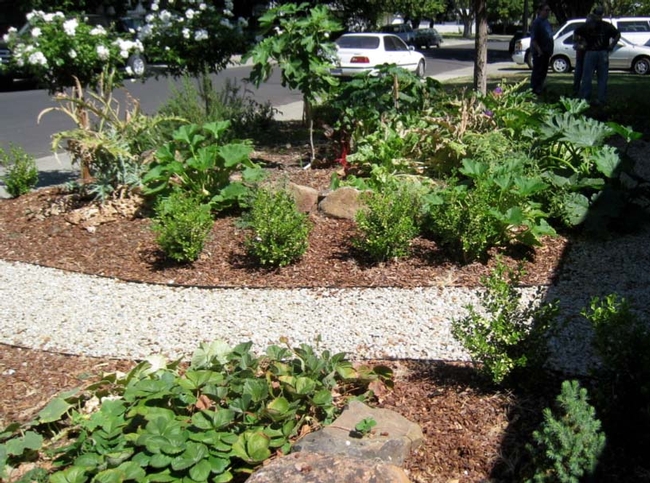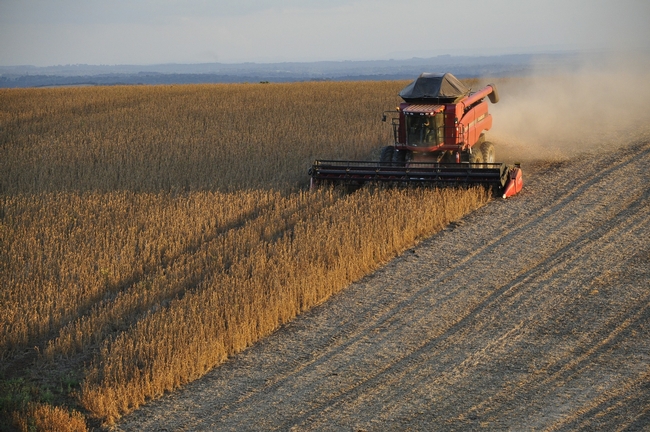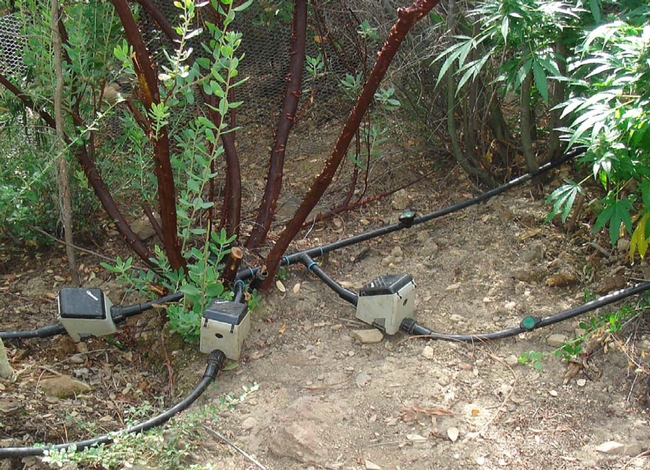Posts Tagged: pollution
Decreases in air pollution boost corn and soybean yield
Faced with growing global food demand, one solution to increasing productivity is cutting air pollution, reported Ohio's Country Journal.
MIT Sloan School of Management visiting professor Konstantinos Metaxoglou and UC Davis ag economics professor Aaron Smith quantified crop yield increases attributed to recent reduction in the emissions of NOx from power plants in the U.S. They found that the average corn yield increased by 2.5% and soybeen yield by 1.6% from 2003 to 2011.
The increased yield led to an increase in the two crops' total annual surplus.
“While farmers are worse off and consumers are better off, the economy on the whole benefits because the gain for consumers outweighs the loss for producers,” Metaxoglou said. “Our findings show that reducing NOx and other harmful emissions from power plants is beneficial not only for human health, but also for agriculture production.”
International symposium will explore air pollution’s effect on plants
Air pollution is harmful to the health of people and animals. That much we know, but how does air pollution affect plants?
Scientists from 25 countries will gather on the Monterey Peninsula to discuss “Plants and the Changing Environment” in June. The 9th Air Pollution and Global Change Symposium will be held June 8-12 at the Asilomar Conference Center in Pacific Grove.
The goal of the series is to consider interactions of air pollution and global change and their impacts on vegetation.
“The symposium is unique in dealing with effects at all levels from molecular and cellular mechanisms, whole plant and crop impacts, all the way up to models of ecosystem and regional impacts,” said David A. Grantz, UC Cooperative Extension specialist based in the Department of Botany & Plant Sciences at UC Riverside.
The symposia are held every few years in different countries, the last in Groningen, The Netherlands, in 2011. The event in California is being organized by Grantz and Kent O. Burkey, USDA/ARS plant physiologist and North Carolina State University professor of crop science and botany in Raleigh.
UC scientists and students engaged in research on the interactions of plant function, metabolism and communities with environmental pollution and global change are encouraged to attend.
“This is an important opportunity for U.S. scientists because the last time this symposium was held in the U.S. was in 1992,” said Grantz. “This is a great chance to catch up on the physiological ecology and modeling efforts underway in Europe and Asia.”
The confirmed keynote speakers include
- Dennis Baldocchi, University of California, Berkeley, USA
- Lisa Emberson, Stockholm Environment Institute and University of York, U.K.
- Lisa Ainsworth, USDA/ARS and University of Illinois, USA
- Koike Takayoshi, Hokkaido University, Japan
- Harry Harmens, Centre for Ecology and Hydrology, Environment Centre Wales, U.K.
- Allen Lefohn, ASL and Associates, USA
- Atul Jain, University of Illinois, USA
- Rainer Matyssek, Technische Universitat Munchen, Germany
The deadline for abstracts, registration and lodging is March 31. The agenda, registration and housing information can be found at WWW.APGC.EU.
So, How About That Lawn?
This is the perfect time of year to think about your lawn. Once the only thing people planted as a front yard ground cover, the lawn is now being seriously re-considered. A lawn takes a lot of care: regular weed control, periodic feeding and, ideally, de-thatching and aerating once a year. If we use chemical fertilizers, pesticides or herbicides on our lawns, there is almost always some run-off that eventually feeds into the San Francisco Bay. Our gas-powered mowers, de-thatchers and aerators contribute pollution to the air we breathe and the electric ones, naturally, use electricity, thereby adding more carbon to the air. Additionally a lawn takes a lot of water.
According to sustainable landscape designer and Cupertino Master Gardener Deva Luna, lawn mowers account for 5% of air pollution in the United States, (I wonder if that includes the weed-eater and the leaf-blower.) and more than 30% of urban fresh water is used to water lawns. Holy cow! That's a lot of water that we may not continue to have available as the population of our state continues to grow, the climate continues to warm, and aquifers are depleted.
With the goal of encouraging wise water usage and a more-healthy, sustainable landscape, Solano County is continuing its Water-Efficient Landscape Rebate program this year. The Solano County Water Agency is again offering residents a rebate of one dollar per square foot of existing lawn removed and replaced with native and drought-tolerant plants on a drip irrigation system. The County is also offering a Bay Friendly Landscape Workshop, planned for September 14th from 10:00 a.m. to 1:00 p.m. Check the website for details. http://www.solanosaveswater.org/Rebates.html
Lawn removal is a pretty big project. Depending on the type of grass you have there may be a variety of approaches. It may involve sod cutting/scraping and smothering; solarizing the soil; sheet mulching; rototilling; or even just pick and shovel labor. If you are interested you can find a nice "how-to" list at fremontlibraries.wordpress.com/2009/06/05how-to-remove-your-lawn.
You can also check out www.bayfriendlycoalition.org/principles for some good reasons to take out that lawn as well as a list of garden professionals in the Bay Area.
In our family we are beginning the process of removing a Bermuda grass lawn and replacing it with appropriate drought-tolerant perennials, perhaps a small deck, a dry creek bed and a swale to catch rainwater, keeping it on the lot. We'll get our first experience with solarization and hope for a nice warm next six weeks to really toast that grass. Easier care, lower water bills and the knowledge that we are making our planet home a little bit more healthy will surely be worth the effort.
Attached are a few pictures of water-wise yards in our area.

Deodara House. (photos by Marian Chmieleski)

Millward House

Wykoff House
Pollute, poach, dewater: Legacies of illicit cannabis grows
While the legality of California’s medical marijuana dispensaries is being debated in courtrooms, a UC Cooperative Extension forestry and wildlands ecology advisor says there are a number of issues related to the unregulated land-use practices of illicit cannabis growing that have not been addressed.
“As a forest ecologist, I spend a lot of time outdoors, and I talk to thousands of people every year about forest-related subject matter,” says Greg Giusti. “And you can’t talk to anybody today on the North Coast without the topic of cannabis growing and cannabis impacts on land coming up.”
In Lake and Mendocino counties, Giusti performs research and shares information with public agencies and private landowners in relation to forest management and freshwater ecology on behalf of UC Cooperative Extension. Marijuana farming is not a topic that Giusti ever intended to address.
Effects on natural resources
Most of the data available about illicit cannabis grows is based on drug enforcement actions, specifically how many sites were busted and how many plants or pounds of plant material were seized. Giusti has gathered photographs and anecdotal evidence of the effects on natural resources of commercial-scale marijuana grows operated illicitly on public and private lands.
Some of the effects he has documented:
- illegal water controls (including dams, stream diversion and water storage)
- water pollution from petroleum, pesticide and fertilizer products
- pesticides applied without permits
- pesticides, fertilizers and other chemicals left behind
- indiscriminate fish and wildlife killing (including poisoning, trapping and poaching for food)
- human trash and waste left after camping
“It’s not this green industry that people talk about,” Giusti says. “They’re diverting water, they’re polluting streams, and there’s a portion who are poaching. We’re also seeing all of the negative effects of unregulated road building, unregulated construction and unregulated human inhabitation for months and months out in the woods.”
Giusti explained that some cannabis growers divert water from streams to store in large water bladders, prematurely lowering stream levels during critical times in the year.
“It's illegal to do, but at the same time you can drive up and down Highway 101 and easily buy these huge bladders,” he said.
He notes that local businesses are selling compost by the ton, rodenticide by the pallet, thousands of pairs of clippers and turkey bags in lots of 100.
“Mainstream businesses are supporting this underground industry,” Giusti said. “You don’t have to be growing cannabis to be making money off of it.”
Raising awareness
In 2010, Giusti organized two community workshops in Lake County to address the impacts of illicit cannabis land-use on forest resources, for a combined attendance of nearly 400 community members. Giusti has shared his results with the board of supervisors for Lake and Mendocino counties, local news media, local foresters and the staff of the North Coast Regional Water Quality Control Board.
“My intention was to initiate a communitywide discussion to ask, ‘Is this what you want to happen to your forests?’” Giusti said. “Up until now it's been talked about in hushed tones, and I wanted to initiate a dialogue out loud. Everybody has been whispering about it.”
The presentation he developed for those meetings continues to generate discussion. Most recently, he has presented to the North Coast Water Quality Control Board staff and other agencies. He has shared photos collected for his presentation with Congressman Mike Thompson’s office as well.
“With the water quality control board, I had the opportunity to engage people whose job it is to protect the beneficial uses of water — and hopefully stimulate an internal dialogue so that they can continue the discussion after I leave their office,” he said. “There are other resource agencies that need to be involved, and county planning departments too. This is an unregulated land-use practice.”
This month, the Lake County Record-Bee ran an article by reporter Linda Williams with the headline “Thirsty marijuana grows suck Eel River dry,” which included some information presented at Giusti’s meetings.
“My efforts seem to be improving people's awareness,” he says. “The very thing I wanted to accomplish — creating broader dialogues — is happening.”
View Giusti's presentation: Illicit Cannabis Production on Forest and Wildland Resources
Fair weather leads to clean air and farmer dispair
This year's mild summer temperatures - which follows a cool, wet spring - has been a curse for San Joaquin Valley farmers, according to an article in Saturday's Fresno Bee.On the bright side, a companion story said this year's spring and summer weather is also responsible for cleaner air than usual in the Valley.
In the farm story, reporter Robert Rodriguez devoted significant space to the Valley's raisin crop, which must reach specific sugar levels before an army of 25,000 workers clips grape bunches and arranges them on paper trays in the field to dry.
"The pressure is really going to be on because we will have a shorter amount of time to pick," the article quoted raisin farmer Pete Gonzalez. "Everybody is going to want to go at once. And that's not going to be possible."
Processing tomatoes are typically planted in stages so processors aren't inundated with the entire crop at once. However, the cool spring delayed the first planting. That means some tomatoes may become overripe before processing, reducing their value, the article said.
For the part of his story on cotton, Rodriguez spoke to two University of California Cooperative Extension experts. UCCE farm advisor Dan Munk told the reporter that cotton growers are hoping for a warm fall to finish the crop.
"The more we go into November, the more opportunities we will have for days on end of fog, and that means more moisture and wet cotton," Munk was quoted.
UC integrated pest management advisor Pete Goodell said he is advising growers not to wait too long to harvest.
"Our approach is to go for the shortest season you can," Goodell was quoted. "The later a grower goes, the greater the chances of losing everything."
In the article about clean air, Bee staff writer Mark Grossi reported that the cool spring and mild summer, paired with other factors - such as wind - created poor conditions for the formation of ozone.
"If the San Joaquin Valley violated the federal ozone standard every day for the rest of the summer, this still would be the cleanest season on record," Grossi wrote.





